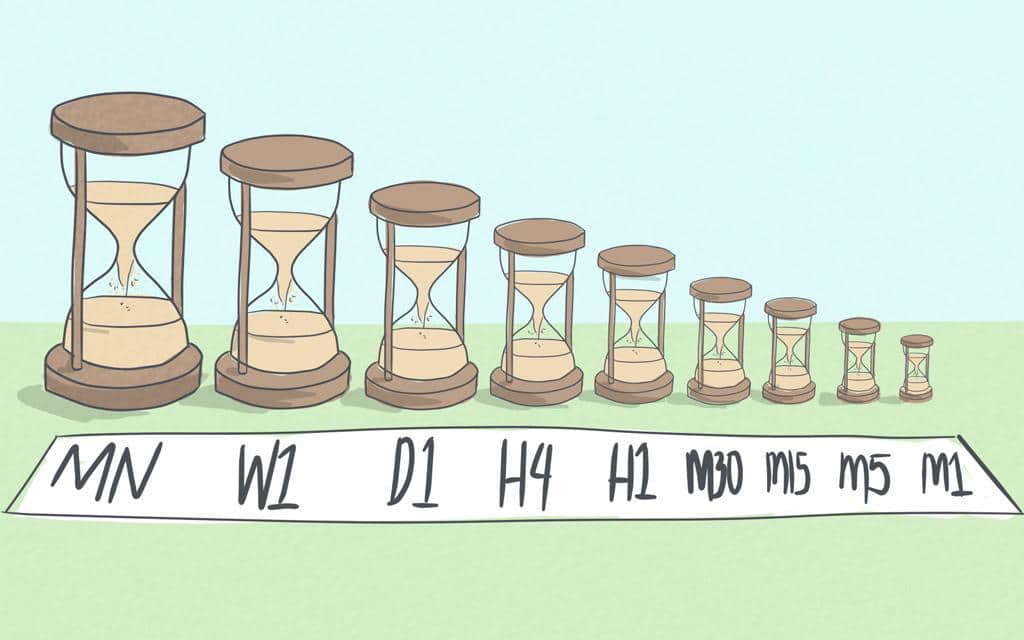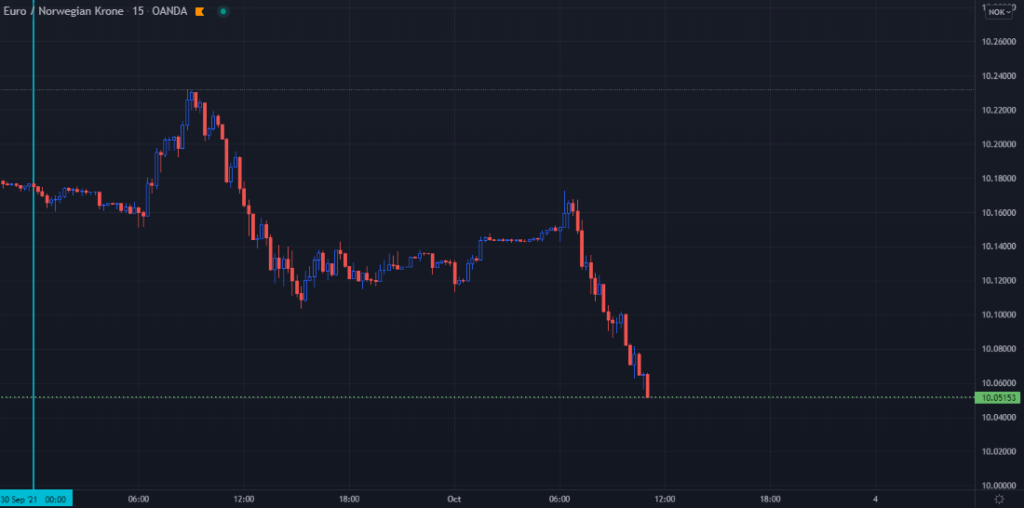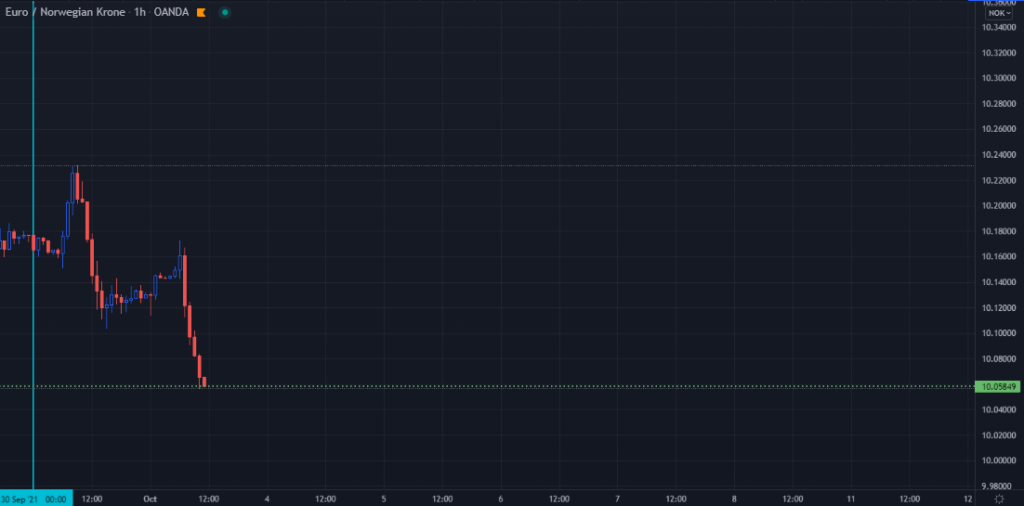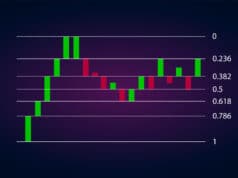On the popular MT4 platform, we have nine distinct time-frames, namely the M1 (one minute), M5 (five minutes), M15 (15 minutes), M30 (30 minutes), H1 (hourly), H4 (4-hourly), D1 (daily), W1 (weekly), and MN (monthly).

More sophisticated charting software like TradingView takes this range to the extreme by offering more time frames and allowing traders to customize the periods. Time frames in currency trading drastically affect our perception of price movements.
One of the tricky things about dealing with charts is how a certain time frame can distort our view of what’s happening. On nine time frames alone, the market trend may look wildly different on each one; so which do you trust?
There’s been a consensus from experienced traders in trading communities that higher time frames are more effective than lower ones, but why? This article will explore specific factors which make higher time frames objectively better than their counterparts and how this information may aid you in your own trading.
The noise factor
Generally, we consider any time frame above the 4H as a high time frame. So, this includes daily, weekly, and monthly. The fundamental reason why many traders consider these charts better has to do with how they filter noise.
In charting analysis of any financial market, noise is when you have too many candles to analyze, which makes the price seem more erratic or random than it really is. With noise, a trader’s view of the underlying trend is distorted because the price seems to move too fast, which can cause ‘whipsaws.’
The lower the time frame, the noisier it becomes. A 5-minute chart prints a candle every 5 minutes. Although this time length seems small, the way price is perceived here is much faster, and you have more data to study.
Consider the two charts below.


Both charts show the price of EURNOK on the 15-minute and 1-hour time frame from the start of the trading day on 30/10/2021. This period represents about a day and a half. While both charts reflect the same market direction, one chart has more candles than the other smoother-looking time frame.
The charts become less noisy the higher you go. Another point here is with a higher time frame; traders have more of a top-down or a bird’s eye view instead of a bottom-up approach. This view helps you pinpoint key support and resistance levels that are more powerful and easily visible on higher time frames.
The time factor
Another distinction with higher time frames deals with how we perceive time. This concept is similar to the noise factor but pertains to how time affects the different structures of candle formations, particularly if we observe certain patterns. Consider a simple question, would you have more confidence in a 1-hour pin bar or a daily pin bar?
More often than not, most people would lean on the latter, but why? Let’s think about how a pin bar forms in the first place. If we were observing a bullish pin bar on the hourly chart, it means the market was moving downwards with a relatively full-bodied candle.
At some point in time, suddenly, a forceful amount of buying occurred, resulting in a long wick and a small body. So, how is this signal more potent in a higher time frame? If the same bullish pin bar happened on the daily chart, it would have taken 24 hours to form.
This amount of time alone is naturally more significant, and traders consider it more worthwhile. In an hour, the price can fluctuate in different directions as this period is shorter and therefore less important.
However, we inherently put more weight into an event that has transpired over a longer time. Therefore, traders look at all price movements through the lens of how long they have formed to confirm their reliability. Like having a friend, you are likely to trust someone you’ve known for years instead of the one you’ve been familiar with for weeks.
The patience factor
Higher time-frames naturally foster patience, perhaps the most significant character trait in forex above technical skills. You generally have more time to analyze with a higher time frame as set-ups can take days or even weeks to form.
On the downside, opportunities on these charts are far less frequent, meaning one prioritizes quality over quantity. However, if one has gotten used to them, they become second nature. The trading ideas generated offer higher risk to reward scenarios on higher time frames because you’re often looking for a more significant move than on a lower chart.
People who have a traditional nine-to-five job, business, or other busy activity during the day can trade these time frames and still make profits in the markets with less screen time. Overall, you have less stress on these charts than the smaller ones and a lower likelihood of overtrading.
Final word
While we’ve presented strong cases for why higher time frames are brilliant, they are not for everyone. It takes a seismic psychological shift in how traders perceive time and years of experience before using these charts regularly. Truthfully, the forex markets are slower than what we want them to be.
Hence, not everyone wants to become a swing or position trader based on the slow nature of these charts. So, it isn’t necessarily to dismiss lower charts as useless. We have short-term traders like scalpers and day traders where analyzing lower time-frames is necessary based on their trading style.
What this article presents is a few technical reasons why studying higher time frames can be more advantageous. Ultimately, a bigger chart synopsizes the ‘bigger story’ of the markets, while the lower charts provide chapters.
While these ‘chapters’ may not be entirely meaningless, traders still need a summary to firmly decide whether to buy or sell without any trivial information. So, with a higher time frame, you deal with less noise, have the potential for higher risk to reward, and you need far less time in front of the computer.




